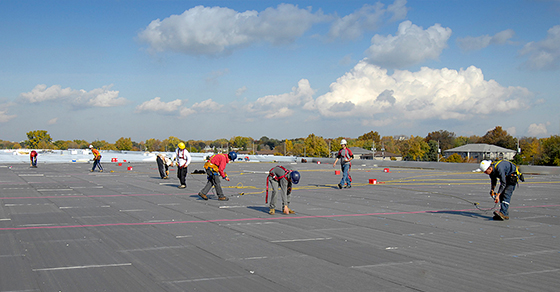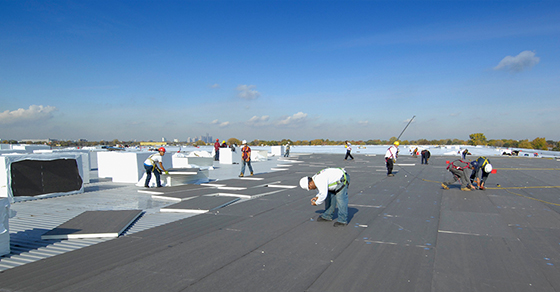Canada is known for many things: scenic views, a diverse culture, and a thriving economy. But it’s also known for its cold winters. This means trouble for your roof if you haven’t implemented regular maintenance and repairs throughout the year.

Cold temperatures result in a wide range of issues that can lead to costly repairs. Understanding what Canadian winters can do to your roof will prepare you year after year so that you can enhance the lifespan and performance of your building’s roof.
What to Look For
Many roofs are wide and have low slopes. This makes it difficult for snow and debris to fall onto the ground. You should have your roof regularly inspected just before winter to ensure that there’s no risk in building up debris.
Older roofs are particularly vulnerable to the freezing and thawing cycles that occur during the winter months. This causes serious damage to the roof’s materials if you’re not prepared.
Inspect your roof’s flashings, drains, and tie-ins in order to identify any existing damage. Areas that have a high accumulation of snow should be addressed as soon as possible. This prevents water from entering any spaces that could lead to further cracking and leaks.
Common Issues During Canadian Winters
Flashings are used to protect the roof’s joints. They play a valuable role in keeping water from damaging your roof and property. Be sure to have your roof’s flashings inspected. They are typically located near skylights and chimneys.
Unfortunately the risk factors of winter risk factors doesn’t end there; Ice dams are another large problem for rooftops. If heat from your property’s interior reaches the roof, it can raise its temperature and increase the risk of ice dams. These form along the edge of your roof and keep water from flowing off of your property. If water becomes trapped on your roof, it will seep into the materials and eventually cause leaks and other damage.
Condensation can also form from the combination of warm and cold temperatures. Moisture leads to mould growth that can cause damage to materials, but this doesn’t just pose a structural risk; it also presents a health risk for occupants.
Getting the Right Help for Canadian Winters
Consulting with a professional roofing company will help you identify any existing risk factors. Damage to your roof or insulation can be difficult to detect with an untrained eye. A service professional provides a comprehensive assessment and program that keeps your property protected during the cold winter months.
Roofing professionals understand the issues that can result from extreme temperatures. They have the knowledge and equipment to maintain your roof safely, and inspect the waterproofing and insulation systems you have in place and make any necessary recommendations.
Protecting your roof during the Canadian winters is critical to maximizing its safety, performance, and lifespan. Regular maintenance and repair from a qualified service team saves you money over time and protects you and your occupants all year round.


